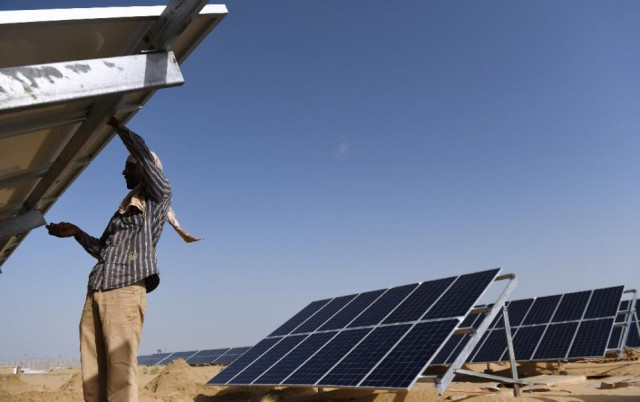Is solar power the right choice for Pakistan?
Costs of solar energy production and plant maintenance quite high

Pakistan has achieved surplus power production and projects in the pipeline will be more than sufficient to meet future demand. Therefore, authorities may divert the investment allocated to solar power projects to the transmission and distribution infrastructure.
“Pakistan’s power production has become surplus. However, the country is still facing hours-long outages due to the crippling transmission and distribution network,” remarked an industry official on condition of anonymity.
“The government should ask investors to invest in the transmission and distribution network instead of solar power projects whose efficiency level is very poor compared to the conventional energy projects (gas, coal and oil-fired power plants),” he pointed out.
The production cost of solar energy stands considerably higher compared to its performance. “It costs over $1 million to set up a one-megawatt solar power project. The cost doubles if storage units are also installed along with the solar power production units,” he said.
Moreover, the cost of maintenance is also notably high as the life of storage units vary from one to two years only.
“What is the purpose of spending millions of dollars on setting up and maintaining solar energy projects when they cannot produce electricity for more than four hours a day and end-consumers have to rely mainly on the conventional power system to meet their full-day requirement,” he asked.
As far as the environmental impact of power projects is concerned, the latest technology being used to set up new gas and coal-fired powerhouses in Pakistan is highly efficient, not only from the production point of view, but also from the environmental perspective.
On the other hand, solar energy projects produce gases which are harmful for human health as well as for the environment. “Solar plants produce bad gases during storage,” the industry official said.
“Latest coal and gas-based power projects produce almost no bad gases as new technology has addressed environmental issues at a time when high importance is attached to mitigating climate change,” he said.
The recent mega coal and gas-based power projects were constructed after taking approval from environmental agencies, he said.
Other limitation of solar power projects was that they only worked under the sunlight. “This makes solar projects highly unreliable,” he said.
Besides, big solar power projects need huge pieces of land for installing solar panels, which are also quite expensive.
Solar plants are alternative energy projects. “Alternatives provide temporary solutions, not the permanent ones,” he said.
According to the Pakistan Economic Survey 2019-20, the installed electricity generation capacity of the country reached 37,402 megawatts in 2020. Maximum demand from residential consumers and industrial estates stands at nearly 25,000 megawatts, whereas the transmission and distribution system has the capacity of approximately 22,000 megawatts.
The transmission and distribution network inflicts a very high cost on the nation as it has been a major constraint to the achievement of moderate-to-high economic growth.
Apart from that, the less-than-required transmission and distribution capacity also remains a major hurdle in the way of becoming a competitive exporting nation in the region and the world.
Pakistan’s mega residential and industrial cities like Karachi, Lahore, twin cities of Islamabad and Rawalpindi, and Faisalabad are facing power blackouts for long hours due to the transmission constraints.
It would be better to divert the intended investment into solar power projects to electricity infrastructure. Pakistan needs a huge investment to upgrade the transmission and distribution network across the nation.
“According to a World Bank report, Pakistan needs an investment of around $10 billion to upgrade the transmission and distribution infrastructure,” the industry official said.
Private sector is reluctant to pour capital into infrastructure projects because of the low return on investment of about 12-12.5% and it continues to rely on government-run infrastructure schemes.
“The government may consider rationalising the rate of return to attract private sector investment into infrastructure projects,” he pointed out.
The much-needed investment in infrastructure projects would help reduce prolonged power outages.
Pakistan has added around 10,000 megawatts of electricity production capacity in the past four to five years following billions of dollars of investment by Beijing in power and road infrastructure projects under the China-Pakistan Economic Corridor (CPEC).
Among the upcoming electricity generation projects of thousands of megawatts is the Diamer-Bhasha Dam, which will add 4,500 megawatts to the national grid on completion of work.
Earlier, the National Electric Power Regulatory Authority (Nepra) chalked out a comprehensive plan to develop 120 new power projects in a bid to add 74,448 megawatts of capacity to the system by 2040.
Published in The Express Tribune, August 17th, 2020.
Like Business on Facebook, follow @TribuneBiz on Twitter to stay informed and join in the conversation.



















COMMENTS
Comments are moderated and generally will be posted if they are on-topic and not abusive.
For more information, please see our Comments FAQ